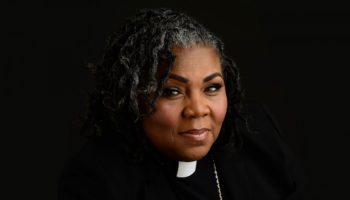“… here we are ‘really and truly’ at Chautauqua. … We imagine that we are unknown among these many thousands, but friendly faces greet us at every turn, … and we begin to feel quite at home.”
—Hallie Quinn Brown at Chautauqua, 1886
Since its inception in 1878, the Chautauqua Literary and Scientific Circle has welcomed African Americans to its membership, with several individuals — including Theodore F.H. Blackman, Joseph Courtney, and George A. Maston — graduating in 1882 as members of the four-year reading course’s inaugural class. During the course of research into the participation of African Americans in the CLSC on behalf of the African American Heritage House, 21 individuals have thus far been identified as having graduated from the CLSC during its early history and, of those 21 graduates, three are known to have attended Recognition Day ceremonies on the Assembly Grounds. One of these three Recognition Day attendees, originally brought to the attention of the AAHH and the Institution’s archives following the African American Heritage House Speaker Series presentation by the Society of Black Alumni Presidential Professor at Johns Hopkins University Martha S. Jones during Week Five in 2020, is educator, elocutionist, activist and writer Hallie Quinn Brown.
Brown was born to freed slaves Frances Jane Scroggins and Thomas A. Brown in Pittsburgh, Pennsylvania, where she lived during her early adolescence until the family relocated to a farm near Chatham, Ontario, after 1860. The Brown family’s residence in Canada was brief, and they returned to the United States in time for Brown to begin coursework at Wilberforce College (Wilberforce, Ohio) in 1868. After graduating from Wilberforce in 1873, receiving her Bachelor of Science degree as one of six graduates of the school that year, Brown continued her education as a member of the CLSC.
In the summer of 1886, after “four years of patient toil and study” and “hours of severe work,” as described in an article she wrote for The Christian Recorder titled “Chautauqua Cullings,” Brown traveled to Chautauqua to attend Recognition Day festivities with fellow graduates of “The Progressives” class. Brown’s recollections of Recognition Day as they appear in her article, including an evening reception at the Athenaeum Hotel at which John Heyl Vincent, his wife Sarah Elizabeth Dusenbury, James H. Carlisle, Edward Everett Hale, and Mina and Thomas Edison received “with true Chautauquan cordially the many thousands who pass through the spacious parlors,” are largely drawn — and in many instances, including this particular quote, borrowed nearly word for word — from accounts of the day as they were recorded in The Chautauqua Assembly Herald in August 1886. Nevertheless, in recounting the days before and after Recognition Day, Brown’s personal reminiscences of “How vast and beautiful is Chautauqua!” tell of how she spent her time on the grounds “comfortably ensconced at the Spencer Cottage,” meeting and greeting fellow CLSC instructors who had imparted “such rare mental feasts” during her course of study, walking along the streets of Chautauqua “admiring this pretty cottage and that,” visiting Isabella Macdonald Alden’s “Pansy Cottage” on Forest, attending lectures and performances in the Amphitheater and Hall of Philosophy, and visiting the Museum, Oriental House, and model of Jerusalem before ultimately “realizing how utterly useless it is to try and exhaust Chautauqua.”
Following her graduation from the CLSC, Brown began touring and lecturing on behalf of her alma mater with the Wilberforce Grand Concert Company. When Wilberforce offered Brown a teaching position in elocution and literature, she declined to accept instead a position as dean of women at Tuskegee Institute in Tuskegee, Alabama, only to later accept the proffered appointment upon her return at the close of the 1892-1893 school year. When she returned to Wilberforce, Brown served as a professor of elocution and English and traveled extensively throughout Europe, touring as an elocutionist.
While in Europe, Brown held membership in the British Woman’s Temperance Association and was responsible for helping establish the first British Chautauqua. Upon her return to the United States, Brown served as president of the Ohio State Federation of Woman’s Clubs and helped organize the Colored Women’s League of Washington, D.C., for which she served as president from 1920 until 1924. In addition to her involvement in a number of social and religious organizations and reform movements, Brown was a talented writer and essayist, authoring several books before her death at her residence, Homewood Cottage, in Wilberforce, Ohio, on Sept. 16, 1949.
—Emálee Sanfilippo
Independent Research Consultant, Chautauqua Research Services




